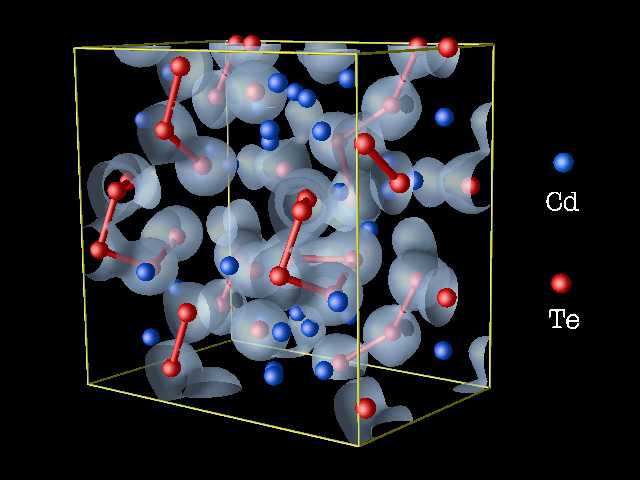Simulating Liquid Semiconductors
V.V. Godlevsky, M. Jain, J.J. Derby and J.R. Chelikowsky, Department of Chemical Engineering and Materials Science, Minnesota Supercomputing Institute, University of Minnesota
One of the most exciting developments in computational material science has been the development of simulation methods using quantum forces. It is no longer necessary to employ empirical interatomic potentials in molecular dynamics simulations. We illustrate these techniques by examining liquid ZnTe. This is part of a larger project encompassing II-VI liquid semiconductors, e.g., to date we have examined ZnTe, CdTe and HgTe in the liquid and solid state. One of the most interesting issues in these materials concerns the conductivity of the liquid state. Most Group IV and III-VI semiconductors are metallic in the liquid state; however, some II-VI semiconductors remain semiconducting in the melt. In order to examine this problem in more detail, we have calculated the conductivity of a prototypical III-V semiconductor (GaAs) and compared its properties to II-VI semiconductors. Our simulations use the pseudopotential density functional method (PDFM) to calculate quantum forces in the melt. We prepare a liquid state ensemble using supercells and Langevin dynamics to thermalize the liquid. Our demonstration illustrates the microstructure of the liquid state and the self-diffusion of Zn and Te within the melt. We summarize our studies of II-VI semiconductors and illustrate how the microstructure of the liquid can affect the conductivity of the liquid state. We will also discuss why it may be difficult to grow Te II-VI's from the melt.
Reference: V. Godlevsky M. Jain, J.J. Derby and J.R. Chelikowsky, Phys. Rev. Lett. 81, 4959 (1998).

